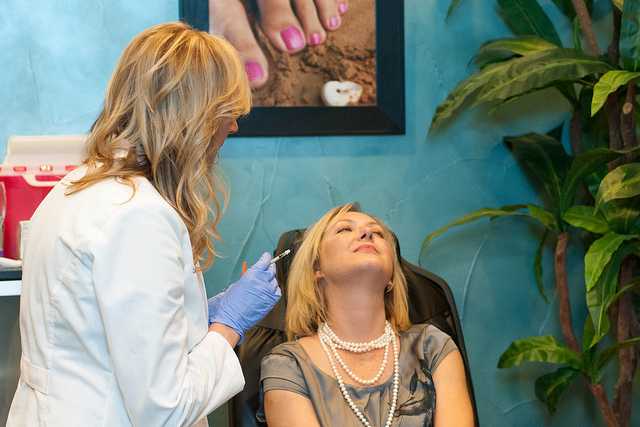
Photo by Oceanview Med Spa
You may want to think again if you think of Botox as a mere wrinkle-smoother. Today, the toxin is used to treat a number of problems, from back pain and migraines to writer’s cramp and anal fissures. Botox and other related drugs, such as Dysport and Myobloc, use low doses of botulinum toxin, which is a powerful natural poison used to paralyze overactive muscles and inhibit sweat glands.
The Food and Drug Administration has approved the drugs for the temporary treatment of neck spasms, crossed eyes, twitching eyelids, severe hand, and facial sweating, and frown lines. However, the off-label use of Botox as well as other related botulinum toxin products has increased significantly, with many novel cosmetic and medical applications. Here are some of the most important uses of Botox.
1. Cosmetic treatments
The injections have been found to be useful for wrinkles around the nose, lip lines, chin dimpling, flaring nostrils, jowl grooves, eyebrow elevation, horizontal forehead lines, and crow’s foot. However, a number of studies included people who were more likely to benefit since they were younger or had fine wrinkles. The shots may not help if you have deeply scarred, thick or oily skin, excess eyelid skin, droopy eyelids, or wrinkles which cannot be smoothed by spreading them apart with your fingers. In addition, paradoxically, Botox can, in fact, cause droopy eyelids.
2. Writer’s cramp
If occupational hand therapy is of no help, the injections can be considered for this muscle disorder. Additionally, they’re also helpful for “musician’s cramp,” which is a condition that causes musician’s fingers to contract while playing.
3. Headaches
The toxin is commonly used in order to treat this condition, but a 2010 analysis of randomized controlled trials involving more than 1,500 people found that it did not prevent the occasional migraine. To date, evidence suggests that it is probably ineffective for chronic tension headaches, too. Last year, the American Academy of Neurology said that despite botulinum toxin’s popularity in headache treatment, it is not effective for migraine headaches and won’t help tension headaches, too.
4. Esophageal spasms
The injections seem to reduce such symptoms as accompanying upper chest pain, difficulty swallowing, and regurgitation. While not as effective as dilating the esophagus or surgery, they may be an alternative to patients who want to avoid the more serious risks of those procedures.
5. Back pain
Even though some people find relief from their back pain with the injections, there is almost no evidence according to the American Academy of Neurology. However, there is at least one study that suggests the injections may relieve low back pain which is predominantly on one side.
6. Drooling
According to some evidence, the shots may control excess salivation in people with amyotrophic lateral sclerosis and Parkinson’s disease.
7. Overactive bladder
According to several studies, it has been found that the injections reduce urinary incontinence, especially in patients with a spastic bladder caused by a spinal cord injury. In a small, controlled trial from Britain, the treatment improved the quality of life in patients who had overactive bladder with no known cause.
8. Excessive sweating
According to a few small studies, the toxin reduces hand sweating as well as facial sweating that occurs during eating.
9. Chronic anal fissures
The shots seem to have a better side-effect profile and healing rate than nitroglycerin ointment for persistent tears, which are caused by spasms of the anal sphincter. According to a few studies, surgery was more effective than the toxin. However, in a few cases, it caused anal incontinence.



